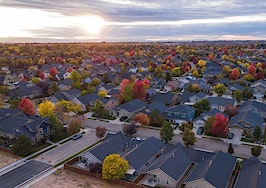Privately owned housing starts dipped 0.7 percent in October to a seasonally adjusted annual rate of 1,520,000, just missing analysts’ expectations of of 1,580,000, according to the U.S. Census Bureau and the U.S. Department of Housing and Urban Development’s new residential construction report released on Wednesday.
Year over year, privately owned housing starts were 0.4 percent above October 2020’s rate of 1,514,000.
Meanwhile, single-family housing starts dropped 3.9 percent from September 2021 to a rate of 1,039,000 in October 2021, as builders continued to battle supply chain issues.

Building permit authorizations for privately owned units, however, increased 4 percent from the previous month to a seasonally adjusted annual rate of 1,650,000, which was also up 3.4 percent year over year.
Single-family authorizations rose 2.7 percent from September to a rate of 1,069,000.
Housing completions of privately owned units remained the same as September’s estimate of 1,242,000, but still 8.4 percent below the rate of completions in October 2020.
Single-family completions declined, meanwhile, by 1.7 percent from the previous month to a rate of 929,000.
“While groundbreaking on new homes slowed in October, housing permits — a leading indicator of future starts — increased to an annual pace of 1.65 million, which is a good sign that home building is beginning to accelerate to keep up with the pace of household formation,” First American Deputy Chief Economist Odeta Kushi said in a statement emailed to Inman.
Given strong buyer demand, builder sentiment has remained relatively optimistic, which may lead to a more active winter construction season than in years past, Kelly Mangold of RCLCO Real Estate Consulting said in a statement emailed to Inman.
“September new home sales figures were strong, which reflects market optimism and indicates that once materials and labor become readily available, we are likely to see a similar surge in starts,” Mangold said. “Heading into winter, it is likely that activity will be more robust than is typical for the holiday season.”









